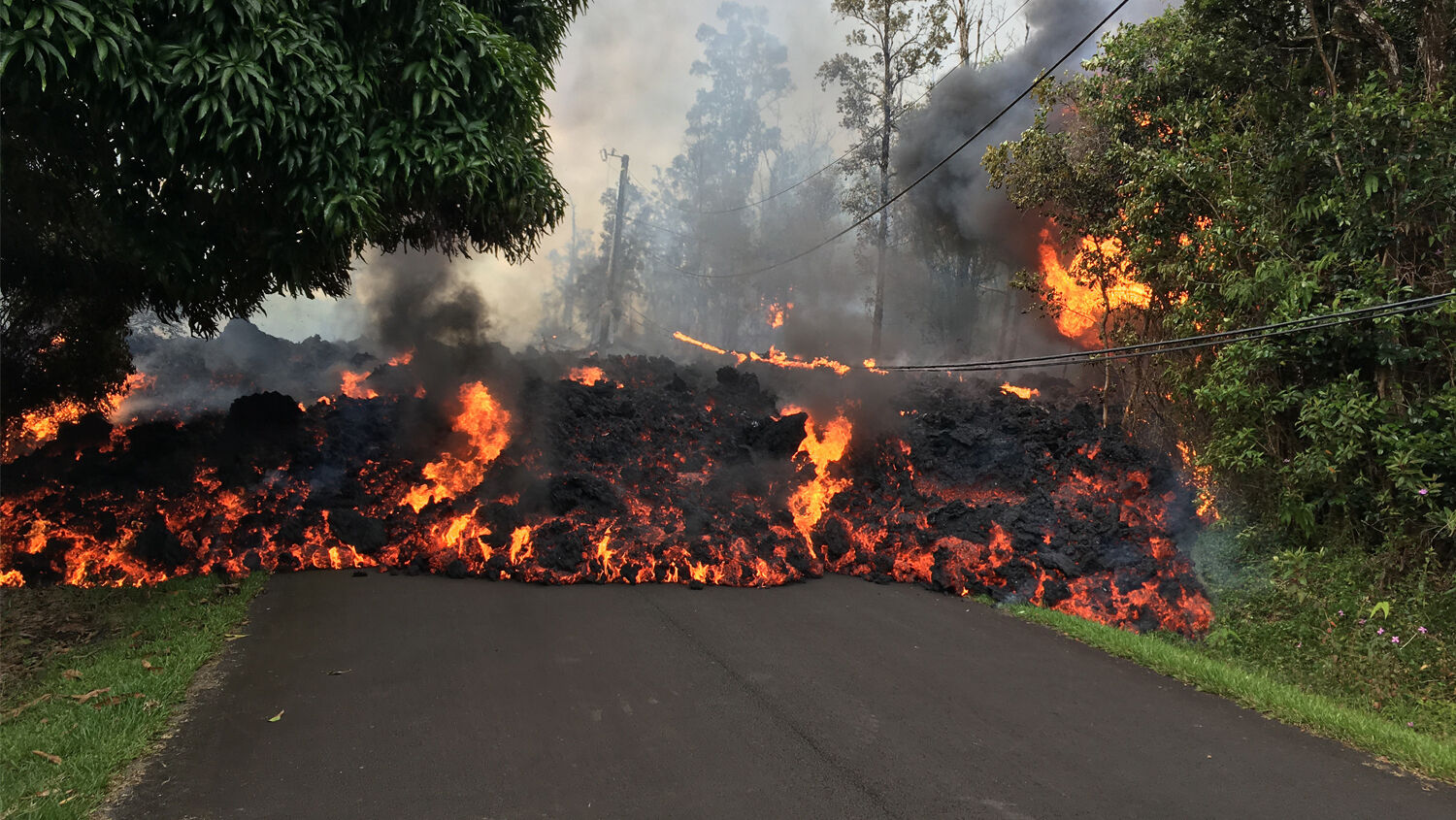
19 Lava Outbreaks, Toxic Gases, and Hawaii’s Volcano Emergency Is Far From Over
Lava belching in spouts up to 500 feet high has destroyed three dozen homes and other buildings on Hawaii’s Big Island, reports on May 15 said.
“The situation around Hawaii’s Kilauea volcano is growing more serious by the hour,” cbs’s David Begnaud wrote.
The volcano has been erupting since May 3, releasing slow-moving lava into residential areas and toxic gas into the air. The flows are setting jungles ablaze and covering highways with quickly cementing rock more than 10 feet thick.
There are now 19 active fissures releasing lava, with new ones emerging almost daily. The lava is slowly making its way toward a major highway in lower Puna, which could soon force some 2,000 residents to join the 1,800 who have already evacuated.
Numerous earthquakes, including a 5.0- and a 6.9-magnitude earthquake, have accompanied the volcanic activity.
“The prognosis is for this to continue,” said Tina Neal of the U.S. Geological Survey Hawaiian Volcano Observatory. “We see no slowdown in activity. Our seismic and geometric data coming from the region still indicate magma accumulating.”
Officials say the eruptions have already cost the island about $5 million in tourism. And now the volcano itself appears ready to erupt, which could rain down car-size boulders up to a 12-mile radius from the crater. Geologists say such an eruption could be the largest in almost 100 years and that the ash cloud could travel tens of miles, affecting tens of thousands of residents.
Meanwhile, Southern California was hit by a swarm of small earthquakes over the weekend. Florida is bracing for “disturbed weather” that could become a tropical or subtropical system. Illinois, Indiana, Tennessee and Kentucky are experiencing record heat. And Wyoming’s Steamboat Geyser just erupted for the fifth time this year after experiencing no eruptions since 2014, which is notable largely because of its proximity to the ancient Yellowstone Caldera supervolcano.
“[A]ll these crazy natural happenings coming at the same time make a fascinating coincidence,” cnn wrote on May 15.
But the Bible reveals that the Creator God can cause volcanoes to erupt: “Mountains have shaken because of Him, And the hills have been melted …” (Nahum 1:5; Young’s Literal Translation). Psalm 104:32 adds, “He looketh on the earth, and it trembleth: he toucheth the hills, and they smoke.”
During His ministry, Jesus Christ told His disciples that many earthquakes would occur before His return. “[T]here shall be famines, and pestilences, and earthquakes, in divers places. All these are the beginning of sorrows” (Matthew 24:7-8).
It seems that every several weeks the Earth unleashes upsetting violence of one type or another: an erupting volcano, a tornado, an earthquake, a wildfire, a tsunami, a superstorm, a flood or a drought. The disasters level properties, destroy homes, ruin crops, and often take lives. Bible prophecy shows that these weather events signal that this era of mankind’s unsuccessful attempts to rule himself is about to end, and that Jesus Christ’s return is near. In the rubble and ash of the catastrophes lies profound hope.
To understand more about the hope tied to troubling nature-related phenomenon, read our free booklet Why ‘Natural’ Disasters?
